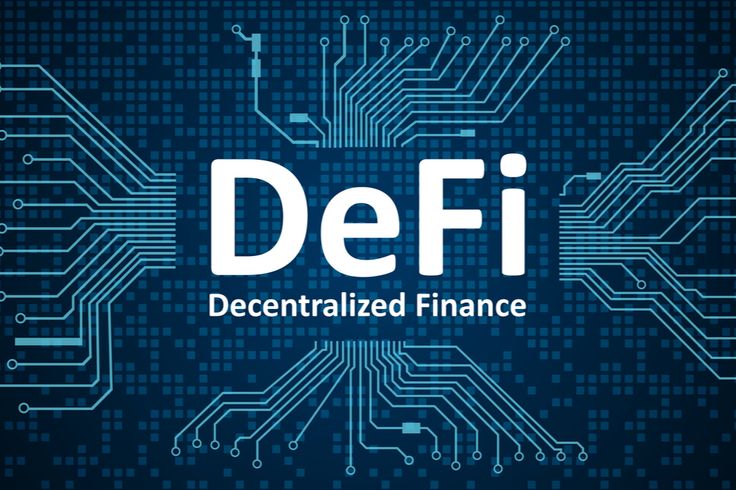Decentralized Finance (DeFi): Transforming the Financial Landscape
Introduction
Decentralized Finance (DeFi) is one of the most revolutionary concepts in the world of finance today. By leveraging blockchain technology, DeFi seeks to recreate and improve upon traditional financial systems, such as lending, borrowing, trading, and asset management, without relying on central authorities like banks, brokers, or governments. DeFi promises to bring financial services to anyone with an internet connection, creating a more inclusive and transparent financial ecosystem.
In this article, we’ll explore DeFi’s history, its impact on the financial industry, its applications, the advantages and challenges it presents, and the future of decentralized finance.
What is Decentralized Finance (DeFi)?
DeFi refers to a system of financial services and applications that are built on decentralized networks, primarily blockchain. These services aim to provide financial instruments and products like loans, insurance, trading, and savings accounts but operate outside the control of traditional financial institutions.
Unlike traditional finance, where a central authority governs and regulates transactions, DeFi uses smart contracts on blockchain platforms to automate and secure financial transactions. Smart contracts are self-executing agreements with the terms of the agreement directly written into code, eliminating the need for intermediaries.
DeFi applications (often called dApps) are built on blockchain networks like Ethereum, Solana, and Binance Smart Chain, which provide a secure and transparent environment for financial transactions.
Key Features of Decentralized Finance (DeFi)
- Decentralization: DeFi operates without central authorities such as banks or government institutions, ensuring that users maintain control over their funds.
- Transparency: Since DeFi applications are built on public blockchains, all transactions and activities are visible to anyone, ensuring accountability and trust.
- Security: Blockchain’s cryptographic nature ensures that DeFi transactions are secure, reducing the risk of fraud or unauthorized access.
- Programmability: DeFi applications use smart contracts, which are automated scripts that execute predefined actions without the need for human intervention.
- Interoperability: Many DeFi applications are built to work together, allowing for seamless interactions between different platforms.
The History of Decentralized Finance (DeFi)
While blockchain technology and cryptocurrencies like Bitcoin laid the foundation for decentralized finance, DeFi as a concept began to gain traction in 2018 with the rise of Ethereum, a blockchain platform that allows developers to build smart contracts and decentralized applications.
- 2017-2018: Early DeFi platforms emerged, with the first decentralized exchange (DEX) like Uniswap and lending protocols like MakerDAO coming into existence.
- 2020: The year of the “DeFi boom,” when the total value locked (TVL) in DeFi projects grew exponentially. Ethereum, the primary blockchain for DeFi, saw a surge in activity, with platforms like Aave, Compound, and SushiSwap gaining significant traction.
- 2021 and Beyond: DeFi reached new heights, attracting institutional investors, and new blockchains like Solana and Avalanche emerged to provide faster and more scalable DeFi solutions.
Key Decentralized Finance (DeFi) Applications
- Decentralized Exchanges (DEXs):
DEXs like Uniswap and SushiSwap allow users to trade cryptocurrencies without relying on a centralized exchange. These platforms use liquidity pools to enable trades, offering more privacy and control over funds compared to centralized exchanges. - Lending and Borrowing:
DeFi lending protocols like Aave and Compound allow users to lend and borrow cryptocurrencies at interest rates determined by supply and demand. Collateralization is required for loans, meaning users must deposit assets to borrow funds. - Yield Farming and Staking:
Yield farming is a process where users provide liquidity to DeFi protocols in exchange for rewards, typically paid in the form of tokens. Staking involves locking up cryptocurrency to support the network and earn rewards, offering users passive income. - Stablecoins:
Stablecoins are cryptocurrencies designed to maintain a stable value by being pegged to an asset like the U.S. dollar. Examples include Dai, which is created through the MakerDAO protocol, and USDC, which is backed by actual reserves. Stablecoins are widely used in DeFi to minimize volatility. - Insurance:
Platforms like Nexus Mutual and Cover Protocol are providing decentralized insurance, enabling users to purchase coverage for a variety of risks, such as smart contract failures or hacking attacks. - Derivatives:
DeFi derivatives platforms allow users to trade financial products that derive their value from underlying assets, such as synthetic assets offered by platforms like Synthetix.
Advantages of Decentralized Finance (DeFi)
- Financial Inclusion:
DeFi provides financial services to people who are unbanked or underbanked, especially in regions where traditional banking infrastructure is lacking. All you need is an internet connection to access DeFi platforms. - Reduced Intermediaries:
DeFi eliminates intermediaries such as banks, brokers, and insurers, which can lower costs and increase the efficiency of financial transactions. - Transparency and Trust:
Since DeFi transactions are recorded on a public ledger (blockchain), they are transparent and cannot be manipulated, providing users with more trust and confidence. - Increased Control Over Funds:
In DeFi, users have full control over their funds, unlike traditional finance, where banks and financial institutions manage your assets. The use of private wallets and keys ensures that users remain the sole owners of their funds. - Innovation:
DeFi allows for the development of new financial products and services, such as decentralized insurance, synthetic assets, and decentralized autonomous organizations (DAOs), which could revolutionize the entire financial ecosystem.
Challenges and Risks of Decentralized Finance (DeFi)
While the benefits are promising, there are also significant challenges and risks associated with DeFi:
- Smart Contract Vulnerabilities:
Smart contracts are code-based, and if there are bugs or vulnerabilities in the code, they could be exploited, resulting in loss of funds. DeFi platforms must undergo thorough security audits to prevent these risks. - Regulatory Uncertainty:
DeFi operates in a largely unregulated environment. Governments and regulatory bodies are still working on how to regulate DeFi projects, and any regulatory crackdown could impact the industry. - Scalability Issues:
Many DeFi platforms are built on the Ethereum blockchain, which has faced issues with scalability and high gas fees, especially during periods of high demand. Newer blockchain platforms are addressing these issues, but scalability remains a challenge. - Complexity:
For many people, DeFi can seem complex and difficult to understand. The lack of a user-friendly interface and the technical nature of some DeFi applications can deter mainstream adoption. - Security Risks:
DeFi protocols are often targeted by hackers due to their high value and decentralized nature. While the blockchain itself is secure, vulnerabilities in the platform’s code can lead to hacks and thefts.
The Future of Decentralized Finance (DeFi)
By 2025, DeFi is expected to continue growing and maturing. Some key developments to watch for include:
- Integration with Traditional Finance:
As more traditional financial institutions explore DeFi, we may see hybrid models that combine the best of both worlds, such as banks offering DeFi services to their customers. - Improved Scalability:
With newer blockchain networks like Solana and Polkadot offering faster transaction speeds, scalability challenges in DeFi are expected to improve. - Increased Regulatory Clarity:
As governments begin to address DeFi regulations, we may see a more structured environment that ensures investor protection while encouraging innovation. - User-Friendly Interfaces:
With the growth of DeFi, more platforms are expected to develop easy-to-use interfaces, bringing DeFi services to the masses.
Conclusion: Decentralized Finance (DeFi)
Decentralized Finance (DeFi) is poised to redefine the financial industry by enabling a more open, inclusive, and efficient system. Its key benefits—reduced reliance on intermediaries, increased transparency, and financial inclusivity—are transforming the way people access financial services. While challenges like security risks, regulatory uncertainty, and scalability remain, the rapid growth and innovation within the DeFi space show that it has a bright future ahead.
As we move into 2025 and beyond, DeFi will likely continue to disrupt traditional finance, offering new opportunities for users and investors around the world. The decentralization of finance is not just a trend; it is the future of financial services.










